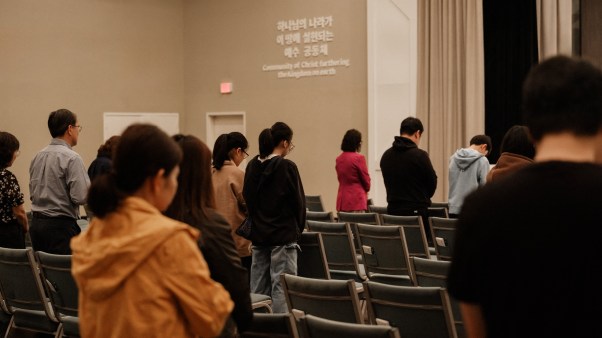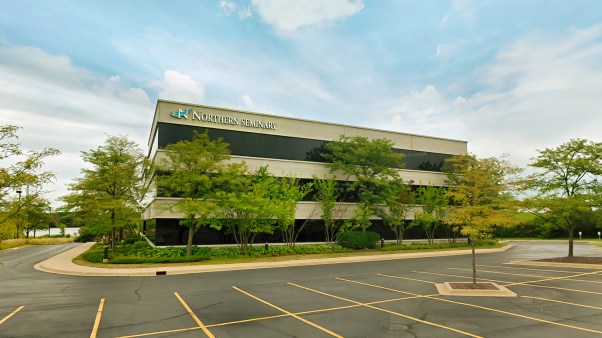Five ways to reverse the downward slide in attendance.
Dear Pastor,
If God rested on the 7th day, why do kids still have to go to Sunday school?
Yours sincerely,
Jerry
Age 8
Duluth
“They don’t” answered Jerry’s folks, and decided Jerry didn’t have to go to Sunday school anymore. They also dropped out themselves—along with many others.
In the 1970s, eight million people stopped going to Sunday school. If this downward trend continues, Sunday school will touch half as many people in the eighties as in the seventies. Slow erosion is easy to miss—a few less per year in each Sunday school is not earthshaking. But when the losses are put together, the total is mind boggling.
Where are these dropouts today? How many are still attending church but in a lukewarm spiritual state, missing the joy of group Bible study and service to others? Even when the statistics are known, it does no good to talk about what might have been if Sunday schools had not declined. The task now is to diagnose problems and correct them if we are to rebuild what is left of Sunday school before it erodes away.
What specifically can be done to halt this decline and turn Sunday school attendance upward? I propose five solutions.
1. Growth requires a vision for the next generation that will motivate God’s people to care, teach, and evangelize.
Woven through the Bible is an emphasis on future generations. God’s covenant with Abraham included generations to come. Moses taught that the obedience of one generation caused blessing on future ones. He instructed parents to teach their children the pure words and powerful acts of God. The phrase “from generation to generation” is a repetitive part of Bible vocabulary. In Ephesians 3:20, Paul ascribes glory to God “in the church and in Christ Jesus throughout all generations.”
The tragedy is that most Christians have lost this biblical vision for the next generation. The me-first philosophy of today has crept into the church. One symptom of this is an unwillingness to serve in any capacity that requires an every-week commitment—like teaching Sunday school. With a focus on “me and my family,” many want to keep schedules open on weekends.
Another symptom of me-first thinking is the one-hour syndrome. It begins with attending church one hour a week but dropping out of Sunday school, Sunday evening service, mid-week prayer meeting or Bible study group. Unfortunately, this disorder keeps progressing from bad to worse.
The next stage is convenience Christianity: worshiping only when there isn’t something better to do. In its terminal phase, this thinking turns “me” into an electronic Christian who catches one or two religious TV programs a week but exercises no ministry at all to others.
Possessing God’s vision for the next generation is the first task in rebuilding the Sunday school. Only when God’s people realize this will something be done. No one should delude himself, either, with the thought that the job of the Sunday school is being done some other way today. It is not.
Many home Bible studies are flourishing today and many families are diligent about teaching their children God’s principles in the home or in Christian schools. Yet all these efforts put together are concentrated on fewer people today than were active in Sunday school a decade ago. A vision for the next generation must go beyond “me and my kids” to caring about the neighbor’s children who may attend no Bible-teaching sessions at all.
2. The Sunday school that wants to grow will strive forexcellence in Bible teaching, personal caring, and quality programming.
One characteristic of growing Sunday schools is that its teachers do more than read Bible stories to kids. They give themselves with passion to the teaching ministry of God’s Word. They believe with conviction in its life-changing power and long-range impact.
Roger Harris, administrative pastor of Crossroads Christian Church in Corona, California, believes that parents come to his Bible school because “kids here go home with knowledge and changed behavior.” He says, “Quality counts. Over a period of time people come to trust that to the point of bringing their friends.”
What adds clout to Harris’s words are the hard facts of his Sunday school’s turn-around. The Crossroads Sunday School had been on the decline for three consecutive years. Now, with a new educational building, more staff, and three sessions of Sunday school, attendance has jumped from 329 to more than 550.
Sunday schools that are increasing attendance do more than care for their own.
3. Sunday schools that want to grow will build an ongoing system of recruiting, evangelizing, and discipling.
Every Sunday, churches have a system of teaching: pastors come to preach, choirs to sing, and people to pray and worship God. Yet, week by week, many Sunday schools have no organized system of outreach at all. Evangelism and education, however, are two wings of the same bird; effective witnessing and good Bible teaching are both essential. The greatest injury to the health of Sunday school today is in the wing of outreach. It takes a lot of hard work for a Sunday school to hold its own.
But God honors the efforts of those who reach out in his name. One man who believes that is Harold Slick, visitation pastor of Rose Drive Friends Church in Yorba Linda, California. He sponsored a visitation program called “Operation Andrew, Philip and Barnabas” to prove it. Within two years, the number of people involved in recruiting, evangelizing, and discipling in his church grew from 12 to 112. Sunday school attendance climbed. The program is built on the observation that unchurched people tend to go through three stages before becoming Christian disciples in the church.
In the exposure stage, people come into contact with the gospel. They may make a first visit to a church or Sunday school class. In the commitment stage, they commit themselves to Christ and their lives begin to change. In the discipleship stage, people feel a part of the fellowship of God’s people and become active in the church.
Andrew workers are recruiters who help people through the exposure stage. They invite friends to attend church or a Christian activity. Some volunteers welcome first-time visitors to the church with phone calls or home visits.
Philip workers help people through the commitment stage. They call on three-time visitors, or those who have finished a pastor’s class, to present the gospel or give assurance of salvation.
Barnabas workers help people through the discipleship stage. They draw new people into fellowship to help close the back door to dropouts. For two months they build friendships and do their best to help new members become active in church life.
What is different about this approach is that it combines flexibility with accountability. Visits and phone calls are made on the worker’s own schedule instead of one specified night per week. Reports, supervision, deadlines, reminders, and organization all keep the program moving. The result is that more workers volunteer and fewer of them feel swamped with an impossible burden.
4. Sunday schools will increase in membership when pastors see them as a measure of their own success or failure.
In the last decade, an alarming change has crept into the thinking of many pastors. With a kind of tunnel vision, they focus on membership and worship services, while they are blinded to Sunday school—assuming it is someone else’s job. While they have not been looking, their Sunday schools have declined.
In contrast, pastors of churches where Sunday schools are growing give constant encouragement to teachers and leaders in the program. Handwritten notes, phone calls, inspirational talks, and words of encouragement from the pulpit all clearly show that Sunday school is high on the priority list in their churches.
One of the most crucial leadership roles of a senior pastor is that of hiring Sunday school staff members. James A. Davey, pastor of North Seattle Alliance Church, says the key to his church’s expansion was a decision to hire more staff members for their children’s and youth ministries. It took four years to rise above a plateau in Sunday school attendance, but it happened. The last two years show steady increases.
5. Sunday schools will boom when they capture the imagination and prayer of God’s people.
Are people in your church urged to pray for Sunday school teachers? Do pastoral prayers include petitions for Sunday school members? Do the needs of the Sunday school come before prayer meetings, prayer groups, prayer chains, or prayer partners? Constant prayer is a recurring theme among staff members of growing Sunday schools.
When Bill Barker, minister of Christian education at Central Church in Memphis, Tennessee, began to work with a Sunday school of 850 members, he found far too few teachers and workers. He started a drive that tripled the teaching staff from 78 to 225. But he did more. Over the years he led the Sunday school to secure a prayer partner for every volunteer staff person. Senior citizens, people in the pews—even fellow Sunday school teachers—all became prayer partners. Is it any wonder that attendance at this church’s Sunday school jumped to 2,270?
It is not too late to repent of the neglect of Sunday school in our churches today. It is not too late to pray:
Pray for a vision for this generation and the next.
Pray for leaders anointed with God’s power.
Pray for quality Bible teaching that builds solid Christian lives.
Pray for outreach ideas and systems of personal contact that win many to Sunday school and a living relationship with Christ.
It is most significant to pray that when God’s people care enough, God will turn the Sunday school from its downward trend to an upward climb.
Then it is time to roll up your sleeves and get to work!
Charles Mylander is associate pastor of Rose Drive Friends Church in Yorba Linda, California.










